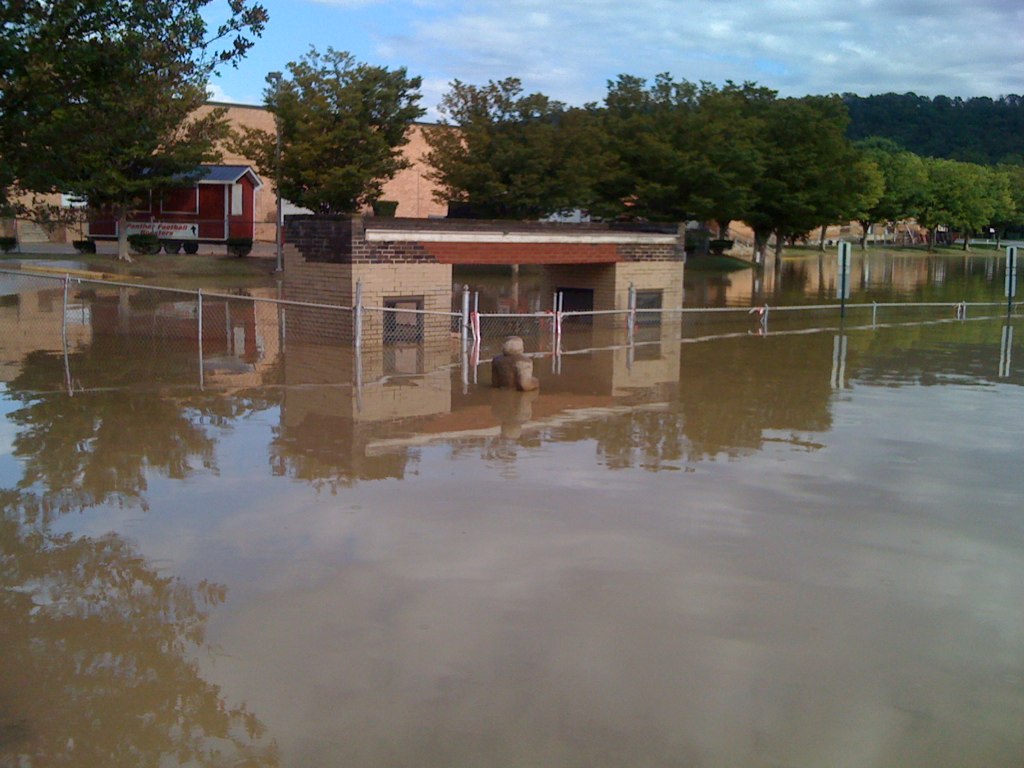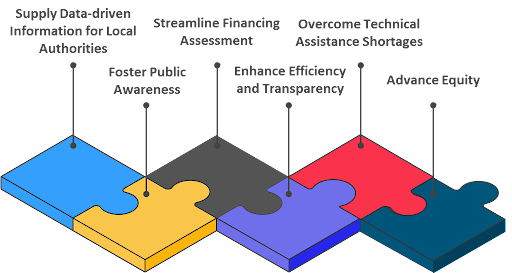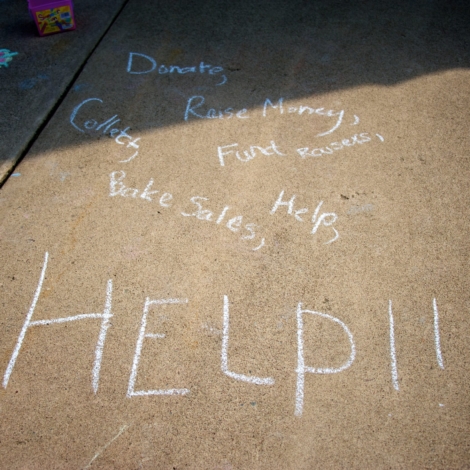For over a century, the US state of Pennsylvania has registered a history of floods. Current state forecasts suggest that approximately 13 percent of the state’s properties will face flooding in the coming 30 years. Concurrently, a significant escalation in extreme temperatures is on the horizon, with projections indicating a 7.21°C (12.88°F) increase in summer temperatures and a potential rise in days surpassing 32°C (90°F), increasing from an average of 10 to 20-30 days.
Despite Pennsylvania’s ranking as the sixth highest gross state product (GSP) in the US, recent events have shown the state’s incapacity to mitigate extreme weather events. Tropical Storm Lee, for example, caused more than (USD) $200 million in damages in 2011. And heat waves have caused hundreds of deaths in the past two decades in major cities like Philadelphia and Greater Pittsburgh, which remain vulnerable today.
Pennsylvania’s struggle reflects a looming global challenge to contend with increasing risk of natural disaster. Globally, floods from storms and extreme temperatures contribute to 41 percent of severe weather-related deaths. Extreme weather disproportionately impacts racial minorities, children, and the elderly, and women, who experience 14 times more pronounced impact than men. Moreover, resilient housing emerges as a critical component in protecting households from the adverse impacts of climate change.
Disaster risk encompasses a combination of hazards, exposure to these hazards, and vulnerabilities. The most efficient approach to risk reduction involves lessening the vulnerability of houses to damage. Introducing resilient house retrofit programs within high-risk zones can lead to a transformative impact on the local housing environment, ultimately enhancing the quality of life for residents. To improve policies and programs’ efficiency, a holistic approach that combines risks and builds house resilience is needed to the climate change hazards.

Floods damaged communities in Pennsylvania in the wake of Tropical Storm Lee in 2011. Photo: Derek Gittler / CC by 2.0 / SOURCE
Imperfect maps
In 2018, the Pennsylvania Emergency Management Agency (PEMA) introduced the State Hazard Mitigation Plan, which includes a set of strategies aimed at mitigating various hazards within the state. Floods are recognized as the most frequent hazard in Pennsylvania, with an estimated economic loss of (USD) $22.3 billion for a 1 percent annual chance flood event (also known as a “100-year flood”), according to the Federal Emergency Management Agency (FEMA) maps. Extreme temperatures are also acknowledged as posing a high risk to human lives in the state, with over 30 percent of houses susceptible to extreme heat.
Pennsylvania has relied on the FEMA flood maps to outline flooding zones and to oversee the implementation of National Flood Insurance Programs (NFIP). Nevertheless, the intricate process behind these maps remains relatively obscure, and their current framework proves inadequate in tackling present-day challenges. While flood maps reflect historical data, they lack capacity to address the changes in precipitation patterns and heightened flooding resulting from Climate Change. Discussions at the local level regarding NFIP and FEMA maps often center around the financial implications of modifying flood hazard zones, which tends to overshadow the underlying risks associated with flooding. To illustrate, consider the example of the aftermath of Hurricane Harvey in 2017. After it struck Texas, it was observed that three-quarters of the houses damaged by subsequent flooding were situated outside the zones with 1 percent of the likelihood of flooding (regions considered to have of high risk), and nearly half of these houses were located beyond the 0.2 percent flood zone.
Disaster resilience retrofits that work
Build Change, a non-profit based in Denver, Colorado (USA) that operates globally to strengthen homes in low-income communities against weather disasters, has demonstrated that it is possible to build housing resilience through retrofit programs. The USA-based non-profit has retrofitted homes in 26 low- and middle-income countries, impacting more than 1,000,000 people and (USD) $4 billion in housing infrastructure. The programs have adopted UN-Habitat’s understanding of adequate housing that prioritizes affordability, sustainability and inclusiveness.
Read on: Five Questions for Elizabeth Hausler, Founder of Build Change
Build Change broadens the concept of housing resilience, focusing on engaging community members and fostering political involvement. Homeowners may find that resilience is an abstract term when it is constrained within the context of disasters. Build Change programs embrace a more encompassing definition of resilience. To engage homeowners and households, successful programs have defined resilient houses as one that promotes dignity in day-to-day life. By aligning the definition with the specific local demands of homeowners, it can become a priority on the government’s agenda, integrated with other stimulus programs.
Homeowners who were engaged in the resilient process are more willing to invest their own economic resources in housing retrofit and reconstruction.
In 2022, Engineering for Change Fellows working with The Pennsylvania State University (better known as Penn State) identified the lack of political and community engagement, as well as the absence of localized data and population awareness, as root causes for resilient housing program failures in Pennsylvania. The World Bank and Build Change showed that successful projects implemented around the world were the result of community engagement and streamlined, transparent programs. Homeowners who were engaged in the resilient process are more willing to invest their own economic resources in housing retrofit and reconstruction.
How Pennsylvania’s disaster resilience compares to LMICs
Homeowners in Pennsylvania share demands commonly found in low- and middle-income countries. These include affordable housing for low-income families, a safe and healthy living environment, and necessary improvements to accommodate minority communities. However, the Commonwealth also presents distinct requirements. The Pennsylvania Department of Aging reported that approximately 18 percent of the population is aged 65 and above, and 11 percent of residents face mobility or cognitive disabilities. Additionally, Pennsylvania’s housing stock surpasses the national average in age, with a median age of 57 years. This older housing stock hampers energy efficiency and contributes to a larger house carbon footprint, while also increasing the likelihood of structural defects that can impact occupants’ well-being.
The state, being economically better positioned than many low- and middle-income countries where Build Change operates, has the potential to create solutions that engage homeowners in the resilient housing process. Customized engineering solutions can be integrated to address the homeowners’ specific demands, to understand individual vulnerabilities at scale, and to streamline the state process to resilient houses.
Research: Disaster resilience may have solutions in digital technologies
Collaborative research undertaken by Penn State University and E4C explores how digital technologies can enhance homeowners’ awareness of retrofit solutions and streamline the pathway to resilient housing. As part of this work, I am reviewing the extent to which knowledge management issues can be addressed. My focus is on the fusion of thermal infrared satellite images and temperature data from ground-based sensors, and how that data can enhance awareness of heat-prone conditions. I am also analyzing the synergy between machine learning and street view images to identify vulnerabilities within housing located in flood-prone regions. Additionally, I am exploring the potential of generative AI to create customized chatbots capable of providing comprehensive assistance to homeowners, among other initiatives.
I have uncovered digital technologies that foster public awareness, provide data-driven vulnerability information to local authorities, enable financing access, streamline programs, deliver informed technical assistance, and advance equity.
Our approach is centered around combining the homeowner’s needs and proposing homeowner-driven solutions with a holistic perspective. I have uncovered digital technologies that foster public awareness, provide data-driven vulnerability information to local authorities, enable financing access, streamline programs, deliver informed technical assistance, and advance equity. While there might not be a single solution for housing resilience in flood and heat-prone areas in Pennsylvania, this approach aims to effectively tackle the combination of complex problems exacerbated by climate change.
A full report with our team’s discoveries and insights will be unveiled shortly. Stay tuned to the E4C website and social media.

Collaborative E4C and Penn State Digital Technologies Framework for research into disaster resilience. Image supplied by the author
About the author
Romulo Martins is a Material Science and Mechanical Engineering researcher and PhD student at The Pennsylvania State University and a former Engineering for Change Fellow.

